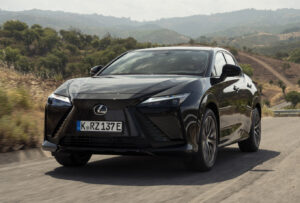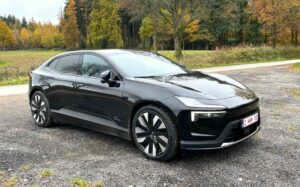Review
Land Rover Discovery Sport
The Land Rover Discovery Sport is the replacement for the Freelander and the first new member of the Discovery family, where it will join the existing seven-seater Discovery. The Discovery Sport was developed at Land Rover’s development center in the UK and is manufactured at the Halewood factory in Liverpool. One of the assets is the chassis, which ensures that the Discovery Sport can be used both on-road and off-road.
Motorizations
In terms of engines, the Land Rover Discovery Sport is available in a number of diesel variants and one petrol version. The entry-level car is the 2.0 eD4 diesel (available from spring 2016) with 150 hp. This is available from 33,900 euros and is the only model with two-wheel drive. For the rest, you can choose from a diesel with 150 hp or 180 hp, each with a manual gearbox or a nine-speed automatic transmission. The basic prices are between 36,400 euros for a 2.0 TD4 manual with 150 hp and 41,100 euros for a 2.0 TD4 automatic with 180 hp. A 2.0 Si4 automatic petrol version is also available. This has a power of 240 hp and can decorate your driveway from 41,100 euros.
We started working with the four-cylinder 2.0 TD4 diesel with a capacity of 1,998 cc. Our test car had a rather modest power of 150 hp and a max. torque of 380 Nm. The top speed is about 180 km/h and the sprint from 0-100 km/h takes 10.3 seconds. You also have four-wheel drive and the nine-speed automatic transmission ensures that the off-road vehicle is always in the right gear. According to Land Rover, average consumption is 5.3 l/100 km (Combined cycle).
Beautiful interior finish
The interior of the Discovery Sport has been designed to provide maximum comfort for all occupants, with extra attention also being paid to creating sufficient space for the head, knees and shoulders. You can also optionally opt for a third row of seats. You can fold and unfold these 2 extra seats by hand. If you fold the seats of the third row, you have a completely flat loading space.
In the interior, the dashboard looks sleek in design, which radiates a certain tranquility. We also noted that materials were chosen that had a high-quality feel and a premium appearance.
Terrain Response
As you would expect from a Land Rover, the Discovery Sport is also an SUV that feels like a fish in water on any terrain, whether on-road or off-road. This is made possible, among other things, by driving technology with which the off-road vehicle is equipped, such as “Terrain Response”. This system has four modes: general, grass/gravel/snow, mud/ruts, and sand. The system ensures optimal traction and driving behavior by adjusting the settings of the engine, gearbox, differentials and chassis systems accordingly. Even if you cannot use the Discovery Sport off-road in your daily life, you can also participate in fun 4×4 internships or even 4×4 trips via Land Rover.
Safety
Safety was also a top priority when developing the new Discovery Sport. For example, it is equipped with a pedestrian airbag on the rear edge of the bonnet. As on so many cars these days, the Discovery Sport is also equipped with an autonomous emergency braking system that automatically brakes when the system detects an impending collision. Useful for parking in the city, detection of oncoming traffic when reversing is possible via the optional “reverse traffic detection” system.
Excellent chassis and suspension
When you drive the Discovery Sport you immediately feel that this is a car with so much potential. Naturally, it performs well on smooth roads, but the car also feels like a fish in water on agricultural roads full of potholes, mud and puddles. You can only imagine how nice it must be to take a trek through a rough and inhospitable area with a car with such capabilities.
The Discovery Sport owes its build quality to a very strong but also light body structure with a base of steel and lightweight aluminum components, including in the roof and hood.
The SUV’s versatile driving dynamics are thanks to, among other things, a new and independent suspension with coil spring struts at the front and an advanced multi-link suspension at the rear. Thanks to the compact aluminum multi-link layout, the necessary space has also been created for, among other things, the optional 2 extra seats and extra space for passengers and luggage.
Conclusion
The new Discovery Sport is a worthy successor to the former Freelander and a valuable addition to the Discovery Sport family. It looks cool on the outside and has a solid finish on the inside. Thanks to a well-designed chassis and suspension, you can conquer any terrain with maximum comfort for driver and passengers.

Johan De Haes
Test driver








Add your first comment to this post